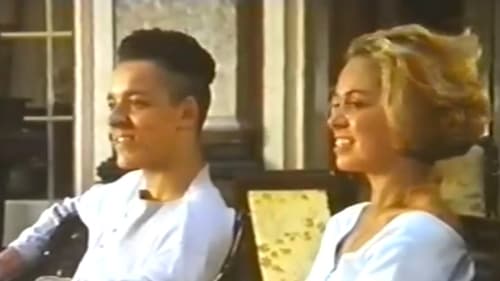
Producer
A three-channel video installation, working with the themes of risk, hybridity and the unfathomable to explore the city of New Orleans through the remarkable life and times of Charles “Buddy” Bolden, the first person known to have explored the sonic tonalities of the music we now call jazz.

Producer
Purple is a six-channel video installation addressing climate change, human communities and the wilderness. At a time when greenhouse gas emissions from human activities are at their highest levels in history, with people experiencing the significant impacts of climate change, including shifting weather patterns, rising sea levels, and more extreme weather events, Akomfrah’s Purple brings a multitude of ideas into conversation. These include animal extinctions, the memory of ice, the plastic ocean and global warming. Akomfrah has combined hundreds of hours of archival footage with newly shot film and a hypnotic sound score to produce the video installation.

Producer
Transfigured Night draws its inspiration from two sources of the same name – Verklärte Nacht – the German poem by Richard Dehmel from 1896 and the musical composition by Arnold Schoenburg in 1899. Using the five-part structure of both the poem and the composition to reflect on the key moments and events which have shaped postcolonial histories, Transfigured Night mirrors the relationship between postcolonial subject and state with that of Dehmel’s lovers – speaking to the fleeting promises and ensuing disappointments of the post-colonial state.

Producer
A homage to Russian film giant Andrei Tarkovsky, this work integrates excerpts of soundtracks from Tarkovsky’s films with a slideshow of landscapes shot by Akomfrah and an evocative sculptural installation. Working with long time collaborator, sound artist Trevor Mathison, Akomfrah creates an environment thick with longing and the evasive and yet inescapable presence of death. At the Graveside of Tarkovsky is a mixed media installation with sound and single channel HD colour video.

Producer
Part documentary, part personal essay, this experimental film combines archive imagery with the striking wintry landscapes of Alaska to tell the story of immigrant experience coming into the UK from 1960 onwards.

Producer
Louis Armstrong is one of the most recognizable figures in jazz, with his incomparable trumpet playing and beaming smile. This video profiles Armstrong from his humble beginnings in New Orleans through his career as America's Ambassador of Good Will. Film clips, vintage photographs and interviews with family, friends, fellow musicians and Armstrong himself are woven together to tell the story of this legendary personality.

Producer
John Akomfrah’s seminal Riot traces the riots in Liverpool during July 1981 in a climate of economic recession under Thatcher’s regime. Akomfrah captures this turning point in Britain’s struggle towards multicultural democracy through interviews revealing the ghettoisation and racial abuse in Toxteth that escalated with stop-and-search policing tactics following the “sus” laws.

Producer
A revealing portrait of the private life and inner struggles of Martin Luther King Junior, champion of non-violent protest and martyr of the Civil Rights Movement. The film tells the story of Dr. King’s childhood and formative years, his early triumphs for Civil Rights and his personal sacrifices, his wilderness years and his rise to international prominence.

Producer
An examination of the hitherto unexplored relationships between Pan-African culture, science fiction, intergalactic travel, and rapidly progressing computer technology.

Producer
The Black Audio Film Collective’s seventh film envisioned the death and life of the African American revolutionary as a seven part study in iconography as narrated by novelist Toni Cade Bambara and actor Giancarlo Espesito. The stylized tableaux vivants that memorialise Malcolm’s life referenced the early 20th century funeral photography of James Van der Zee’s The Harlem Book of the Dead and the elemental static cinematography of Sergei Paradjanov’s The Colour of Pomegranates.

Producer
Black filmmaker John Akomfrah believes that, for too long, being English has meant being white. In an attempt to show Englishness from the point of view of mixed-race English people, he visits Liverpool, one of England's oldest multicultural communities.

Producer
The tumultuous life of the controversial 1960s black revolutionary (and convicted murderer) Michael X is illustrated by a kaleidoscopic melding of sound and images. The radically discordant free jazz soundtrack provides a surreal counterpoint to the mix of newsreel and staged footage in this exhilarating experiment in documentary storytelling.

Production Manager
The Black Audio Film Collective’s acclaimed essay film, 'Handsworth Songs', examines the 1985 race riots in Handsworth and London. Interweaving archival photographs, newsreel clips, and home movie footage, the film is both an exploration of documentary aesthetics and a broad meditation social and cultural oppression through Britain’s intertwined narratives of racism and economic decline.

Producer
The Black Audio Film Collective’s acclaimed essay film, 'Handsworth Songs', examines the 1985 race riots in Handsworth and London. Interweaving archival photographs, newsreel clips, and home movie footage, the film is both an exploration of documentary aesthetics and a broad meditation social and cultural oppression through Britain’s intertwined narratives of racism and economic decline.

Producer
Produced while the Black Audio Film Collective were undergraduates, Expeditions 1 – Signs of Empire is the first of a two-part 35mm slide-tape text entitled Expeditions; part two is entitled Images of Nationality. The work toured England from November 1984 to March 1985, using a Kodak dissolve unit to sequence images into narrative. The soundtrack to Signs of Empire, which consisted of tape loops of musique concrete and political speeches, was amplified to create a powerful environment of dread.














